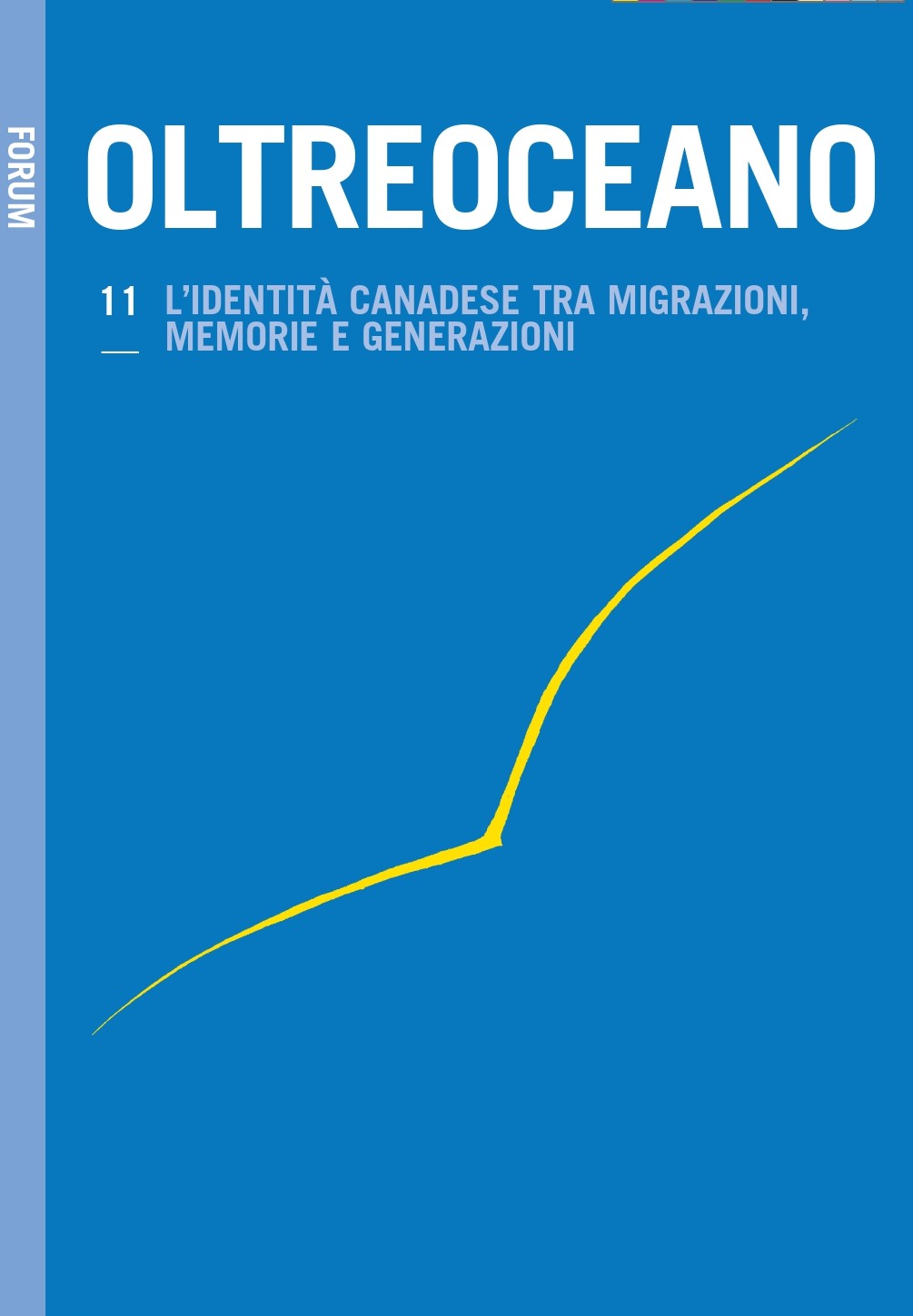Rites of Passage Generational Cycles in Canadian Animated Movies
Keywords:
cinema, animation, National Film Board of CanadaAbstract
Active for more than seventy years, the National Film Board of Canada has allowed the creation of countless experimental animated films. Many works explore delicate and complex themes, such as generational passages and the structure of identity; the paper will take into account how works by artists like Landreth, Forbis, Tilby and Janke developed the theme of memory in cultural, social and psychological contexts.
Riti di passaggio: cicli generazionali nel cinema d’animazione canadese
Nel corso di più di settant’anni di attività, il National Film Board of Canada ha permesso la realizzazione di innumerevoli film d’animazione sperimentale. Molte di tali opere esplorano argomenti complessi e delicati, come il passaggio generazionale e la struttura dell’identità; nel corso dell’intervento si analizzerà il modo in cui opere di autori come Landreth, Forbis, Tilby e Janke hanno declinato il tema della memoria in ambito culturale, sociale e psicologico.
Downloads
References
Bendazzi, G. (2012): Cartoons. One Hundred Years of Cinema Animation. 1994. Bloomington: Indiana University.
Cruikshank, J. & al. (2013): Life Lived Like a Story, 1990. Lincoln, Nebraska: University of Nebraska.
Giurlando, D. (2015/0513): Personal interviews with Christopher Auchter.
Giurlando, D. (2015/05/19): Personal interviews with Daniel Janke.
Giurlando, D. (2015/06/03): Personal interviews with Louise Profeit-LeBlanc.
Giurlando, D. (2015/12/12): Personal interviews with Wendy Tilby and Amanda Forbis.
How People Got Fire: Story Guide. National Film Board of Canada. Retrived from http://www.yesnet.yk.ca/firstnations/pdf/hpgf_guide.pdf
Indigenous and Northern Affairs of Canada. Retrieved from https://www.aadnc-aandc.gc.ca/eng/1100100010002/1100100010021; https://www.aadnc-aandc.gc.ca/eng/1307460755710/1307460872523; https://www.aadnc-aandc.gc.ca/eng/1100100015644/1100100015649
National Film Board of Canada. Retrieved from http://onf-nfb.gc.ca/en/our-collection/; https://www.nfb.ca/; https://www.nfb.ca/film/spare_change
Pilling, J. (2001): Animation: 2D & Beyond. London: Rotovision.
Robertson, B. (2004): ‘Psychorealism’. Computer Graphics World, 27, 7. Retrieved from http://www.cgw.com/Publications/CGW/2004/Volume-27-Issue-7-July-2004-/Psychorealism.aspx
Robinson, C. (2008): Canadian Animation: Looking for a Place to Happen. London: John Libbey.
Robinson, C. (2009): Ballad of a Thin Man: In Search of Ryan Larkin. Los Angeles: AWN.
Slowik, M. (2014): Telling What Is’: Frame Narrative in Zbig Rybczynski’s Tango, Wendy Tilby and Amanda Forbis’s When the Day Breaks and Yuri Norstein’s Tale of Tales. Animation: An Interdisciplinary Journal, 9, 3, pp. 281-288.
Sidney, A. & al. (1977): My Stories Are My Wealth. Whitehorse, Yukon Territory: The Council forYukon Indians.
Tilby, W. & Forbis, A. (s.d.): - direction, animation, illustration. Retrieved from http://www.tilbyforbis.com http://www.tilbyforbis.com/
Zýková, V. (2012/02/10): Strong Starting Points of Inspiration won’t Let You Leave Them Alone. 25fps. Retrieved from http://www.tilbyforbis.com http://25fps.cz/2012/interview-daniel-janke/
Downloads
Published
How to Cite
Issue
Section
License

This work is licensed under a Creative Commons Attribution-NonCommercial-ShareAlike 4.0 International License.
The authors undertake to comply with the following conditions, which are considered accepted at the time of submission of their contributions.
The sending of a text implies that it is unpublished and not submitted to be published elsewhere.
1. If accepted, the author shall confer on the publisher the right to publish and distribute it both in paper form and in the online electronic edition. The published articles will be downloadable and made available in open access.
2. Provided that it correctly indicates that the first publication took place in the journal Oltreoceano. Rivista sulle migrazioni the author has the right to: a) reproduce the article in separate extracts or collected in a volume; b) publish the article on their personal website or teaching site provided that these sites are of a non-commercial nature; c) deposit the article in online archives of a non-commercial nature, linked to the institution they belong to or as part of projects for the non-commercial dissemination and open access of scientific works.
The use of contributions by third parties, for commercial or otherwise unauthorized purposes, is not allowed. The publisher declines all responsibility for the unauthorized use of the material published in the journal.












